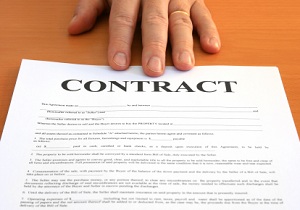 With the existing housing crisis and credit as tight as a drum, a rent to own option would seem a perfect solution for many buyers and sellers.
With the existing housing crisis and credit as tight as a drum, a rent to own option would seem a perfect solution for many buyers and sellers.
Cash-strapped buyers would get a chance to save for a bigger down payment or make themselves more creditworthy.
Likewise, cash-strapped sellers would be able to get out from under a house, with someone else paying the mortgage and eventually taking it off their hands.
Be very careful though, in selecting good rent to own contracts. Make sure to consult a lawyer or real estate agents so the contract works in practice and not just in theory.
Be careful that it does not become a nightmare for both buyer and seller.
How Rent to Own Contracts Work
Traditionally, a rent to own agreement is executed by the owner interested in giving a long-term tenant a shot at home ownership or those interested in expanding their pool of buyers in a tough market.
When searching online, you will often find this option on a multiple listing service (MLS) description, with the line, “Seller will consider a rent to own purchase.” It also can be found in a home’s advertising.
Typically, a potential buyer will agree to a set lease term, with an agreed-upon date that gives a buyer the option to purchase the home, either for a specific amount or by some agreed-upon method of determining value.
The renter will pay some kind of consideration upfront for the right to buy at the end of the lease, such as a nonrefundable deposit of several thousand dollars.
The Risks
Of course, these rent to own contracts are not without risks for both sides. Buyers can pay, only to find that the owner has stopped making his mortgage payments during the lease term. There is also the danger of owners winding up with a deadbeat tenant who has no interest in completing a purchase.
Remember that rent to own is a means to help people in need. Taking advantage of people’s desperation, whether due to mortgage payments or whatever, may gain some money but, at the expense of someone else.
All the seller and buyer needs to do initially is to agree on the rental price and eventual sales price. Negotiate for a win-win situation for both sides. Both must also remember that once the contract is signed, the sale price of the house is locked in until the end of the rental term. This can be from one to three years or more. Whether housing prices or interest rates rise and fall during the lease period, the agreed price is the final price.
Renters also have to pay an option fee and then a rent premium. The option fee is a set amount that the renter pays the seller. If, at the end of the lease period, the renter buys the house, the option fee becomes part of the down payment.
If the renter does not buy the house, the option fee becomes income for the seller.
Rent premiums are an amount slightly above the typical rent, with a portion of that money usually going toward the future down payment.
